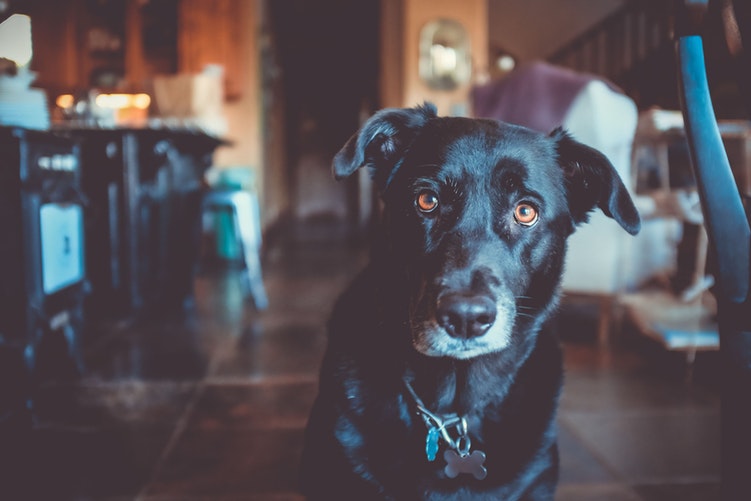Is everything alright with your old dog? Maybe. As time takes your pup from adult to senior, some changes are visible, and others are hidden. Shifts in appetite, weight, mobility, demeanour, sleeping pattern and energy can be a sign that something is wrong. Here are a few things to look out for and how to help your older doggle with age-appropriate care.
5 COMMON OLD DOG PROBS AND HOW TO HELP
1.
PROBLEM – smelly breath
Teeth take a knock as time comes a knockin’ and gums are also in the line of fire. Unpleasant odours from the mouth of your mutt could mean tooth decay, gingivitis, periodontitis, or infection. Clues are blood in the mouth, swollen gums and/or struggling to eat, and stinky smells when she smiles at ya. Oof, Petal!
ACTION – dental check-up to diagnose
It may just be a rotting tooth, or it may be something more serious. If left untended, age-related dental issues could lead to bone loss, bacteria in the bloodstream and, ultimately, organ damage. Take her for an oral inspection and an x-ray perhaps. Our cover can help with the cost.
2.
PROBLEM – a widdle accident
A puddle of urine here, an unintended poop there; incontinence can be an age thing. It could also be a treatable thing.
ACTION – get to a dog doc for medical advice
Get a vet to test for Urinary Tract Infection (bladder infection) and discern whether once-off or regular medication can help. Some pet foods can address ongoing issues of inflammation (that even non-seniors can suffer). Check out our piece on diets for older dogs here and another about feeding your hound age-appropriate food here. Remember that defecating in an unusual place can be a sign of other trauma, so think carefully about what’s been going on recently and share this info with your vet.
3.
PROBLEM – slow and stiff and snappy
Arthritis can flare up as the body tissues change. Old injuries can return with a vengeance. Dogs in their golden years can struggle with the steps, jumping, getting in and out of the car, and even the slippery tiled floors. You may notice wincing when settling or getting up, limping, a change in the way your dog walks/runs, stiffness, swollen joints and slowness. They may also lick at a sore joint or even warn you not to touch the area by growling, snarling or even snapping if you come near it. Don’t take it personally, take action - they’re in pain!
ACTION – identify the issue and apply (medical) intelligence!
Some breeds, like German Shepherds, are particularly prone to spinal degeneration, in others the natural wear-and-tear of life can put principal joints under pressure. Diagnosed arthritis can be treated with anti-inflammatories and even support ramps to skip the stairs. You can also invest in supplements like chondroitin and glucosamine from an early age and get medicated foods with built-in anti-inflammatories. Consider adjusting your grandpooch’s exercise programme to include more frequent but shorter and gentler walks on soft, level ground. You can also try swims in summer or another low-impact exercise.
4.
PROBLEM – clumsy, with cloudy eyes
Loyal as your mutt might be, deteriorating vision is a common issue in ageing animals. Is she bumping into furniture? Are her eyes “milky” with an odd film over them? She may have cataracts and it may be operable. Also look for dilated pupils in bright light (when they’d usually be very small) and red or irritated eyes.
ACTION – stick to familiar spaces (and maybe build headguard?)
If it’s not cataracts and not treatable, there’s still a lot you can do to help a dog with increasingly poor vision. Stick to familiar exercise routes and known environments and try not to move furniture/garden pot plants around – she will learn the lay of the land even if she can’t see it properly. Some dog lovers have designed clever guards to make moving around easier. It worked wonders for Muffin and Basil.
5.
PROBLEM – thirsty, skinny, snappy, clumsy, AND slow-to-heal
Organs age – it’s a fact of life. If a dog’s pancreas isn’t producing the correct amounts of the hormone insulin, it can wreak havoc on their behaviour and energy levels. Look for symptoms including drinking more water more often, urinating more frequently, weight loss, fatigue or irritability, recurring infections, unclear vision, and slow-to-heal wounds or bruises. It tends to affect dogs aged around 8 or 9 and is prevalent in females. Samoyeds, Cairn Terriers, Pugs, Toy Poodles and Miniature Schnauzers are particularly prone. It is often hereditary.
ACTION – get an accurate diagnosis and start treatment ASAP
The sooner you have a medical professional investigate, the sooner you can get an accurate diagnosis and begin to better manage the disease. With the right mediation and compassionate care, your pooch will suffer less, and you can both make more of the time left with her.
Remember – there are a host of other ailments and ills that a senior dog can suffer. Dementia, confusion, hypersensitivity to heat or cold, unexplained anxiety, changes to the condition of the skin, coat and nails, deafness/difficulty hearing, and more frequent injuries can become commonplace. Keep a careful eye on your senior dog and make sure to visit the vet for regular check-ups. Alert animal groomers and ask them to take extra special care to ensure your loyal companion’s comfort in the salon. Also, good to bear in mind that older dogs have different dietary needs. We investigated that for you here. Rule of thumb – be alert and patient. Love is forever, but the body is not.
Related



